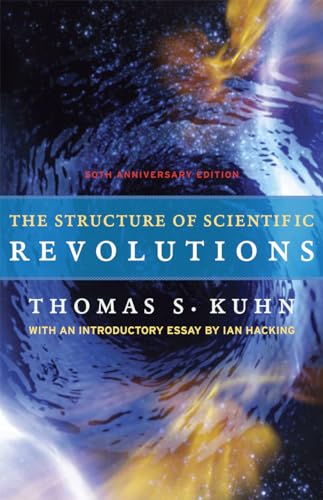The Structure of Scientific Revolutions
50th Anniversary Edition
Thomas S. Kuhn
BOOK REVIEW

In the sprawling expanse of intellectual discourse, few texts have ignited such fervent debate as The Structure of Scientific Revolutions by Thomas S. Kuhn. This book, published to mark its 50th anniversary, transcends mere academic commentary; it challenges the very foundation of how we perceive progress in scientific thought. Kuhn, with his piercing insights, does not just offer a theory; he presents a seismic shift in the way we evaluate knowledge-the ramifications of which ripple through the corridors of academia and beyond. 🌊
Kuhn's argument unfolds with a provocative assertion: scientific progress is not a linear accumulation of knowledge, as traditionally believed, but a series of revolutionary leaps. This assertion invites readers to reevaluate everything they believe about the scientific method and the evolution of ideas. He introduces the concept of "paradigm shifts," whereby a dominant scientific theory-once widely accepted and unchallenged-can be overturned by new perspectives that radically reshape research and understanding. 🤯
Consider, for instance, the transition from the Ptolemaic geocentric model to the Copernican heliocentric theory. That wasn't simply a scientific debate; it was a seismic cultural upheaval. A similar paradigm shift echoed in the realm of physics with the advent of quantum mechanics, shaking the very roots of classical Newtonian physics. Through these examples, Kuhn illustrates how science is not just a discipline of objective observations but an intricate tapestry woven with sociocultural threads that affect how knowledge is validated and accepted.
Kuhn's theory catalyzed profound discussions. Critics argue that he undermines the continuity of scientific knowledge, positing that science isn't merely about discovering facts but is intertwined with human interpretations. Others contend that Kuhn's ideas foster skepticism, potentially leading to the relativism that threatens scientific authority. Yet, supporters find inspiration in his call for a nuanced understanding of scientific practice, acknowledging the importance of context in shaping knowledge. 🌀
As you delve deeper into The Structure of Scientific Revolutions, you may feel your preconceived notions about scientific certainty and objectivity begin to unravel. Kuhn's work is not just for philosophers or scientists; it is a clarion call for all of us to engage critically with the frameworks that guide our understanding of the world. His narrative is alive with historical examples that evoke a sense of urgency and relevance, pushing readers to confront the limitations of accepted dogma.
But what makes this book a transformative experience is not just its content; it's the exhilaration of revelation. With each chapter, Kuhn dismantles the façade of scientific objectivity, leaving readers grappling with the uncomfortable truth that knowledge is as much about belief as it is about empirical evidence. Does that instill fear? Perhaps. Does it inspire a quest for deeper understanding? Absolutely.
In conclusion, The Structure of Scientific Revolutions is a provocative masterpiece that demands attention. Kuhn not only reshapes the discourse around scientific advancement but forces us to confront the very essence of what it means to know. If you yearn to understand how revolutions in thought have shaped the trajectory of human knowledge, this book is an absolute must-read. Ignoring it would be like stepping into a conversation completely unarmed, unaware of the shifting paradigms that influence every facet of our understanding. So, are you ready to break through the accepted and embrace the revolutionary? ✨️
📖 The Structure of Scientific Revolutions: 50th Anniversary Edition
✍ by Thomas S. Kuhn
🧾 264 pages
2012
#structure #scientific #revolutions #50th #anniversary #edition #thomas #kuhn #ThomasSKuhn